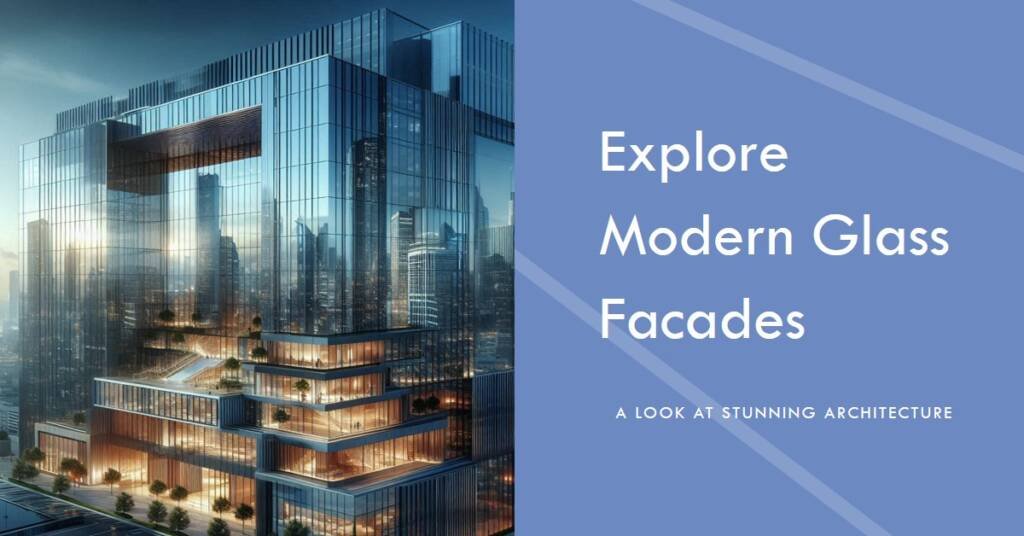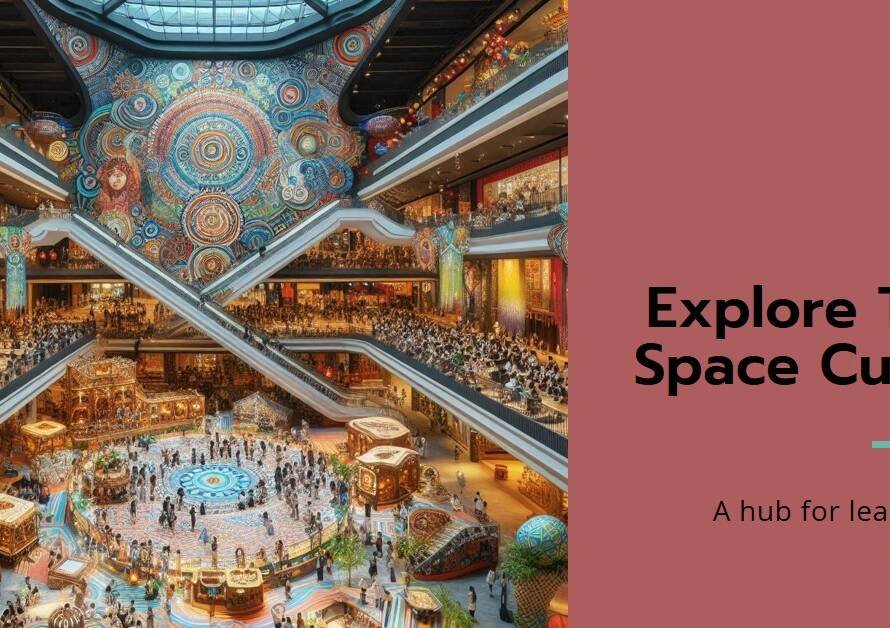
Table of Contents
- Introduction to Glass Facades
- Benefits of Glass Facades in Modern Architecture
- Innovative Techniques and Technologies
- Iconic Buildings with Glass Facades
- Challenges in Designing Glass Facades
- Sustainable Practices in Glass Facade Architecture
- Future Trends in Glass Facade Design
- Comparative Analysis of Traditional vs. Glass Facades
- Conclusion: The Impact of Glass Facades on Modern Architecture
Introduction to Glass Facades
The concept of glass facades in modern architecture represents a significant evolution in building design, enhancing both the aesthetic and functional aspects of structures. Originating from the early use of glass in buildings, the transition to larger and more extensive glass panels marked a pivotal shift in architectural practices. In the late 19th and early 20th centuries, the advent of steel frames allowed architects to explore new possibilities for incorporating glass into building facades, leading to iconic designs such as the Crystal Palace in London and the Sears Tower in Chicago.
In contemporary design, glass facades have become synonymous with modernity and transparency. They allow for the integration of natural light into interior spaces, promoting a connection between the indoors and the surrounding environment. The sheer expanse of glass also allows for unobstructed views, transforming the way occupants experience their surroundings. This phenomenon reflects a broader trend in architecture towards openness and fluidity, replacing the heavier, opaque materials traditionally used in building facades with lighter, more ethereal alternatives.
The environmental and functional benefits of glass facades cannot be overlooked. Advances in technology have led to the development of energy-efficient glazing solutions that contribute to a building’s sustainability. These innovations help reduce energy consumption while maintaining comfortable interior temperatures. Furthermore, the use of glass in building envelopes can improve acoustics, reduce outside noise, and provide safety through shatter-resistant treatments. Therefore, glass facades not only serve an aesthetic purpose but also enhance the performance of modern buildings.
As glass facades continue to gain prominence in contemporary architecture, they challenge traditional design notions and push the boundaries of creativity. Their role in shaping the skyline of cities and elevating user experiences is undeniable, marking them as a vital element of modern architectural language.
Benefits of Glass Facades in Modern Architecture
Glass facades have become increasingly popular in modern architecture due to their numerous advantages. One significant benefit is energy efficiency. By utilizing high-performance insulated glass, buildings can effectively regulate indoor temperatures, reducing the need for extensive heating and cooling systems. This not only lowers energy consumption but also minimizes operational costs over time. The incorporation of energy-efficient glass options helps in creating sustainable structures that align with the global push towards reducing carbon footprints.
Another noteworthy advantage of glass facades is their ability to enhance natural lighting within spaces. The transparency of glass allows ample daylight to flood interiors, which can elevate the overall ambiance and reduce reliance on artificial lighting during the day. This increase in natural light can contribute to improved occupant well-being, increasing productivity and overall satisfaction in work environments. Furthermore, the use of glass opens up views to the outside, creating a seamless connection between the interior and exterior while maximizing the aesthetic appeal of the structure.
Glass facades also create an illusion of space, making buildings appear larger and more inviting. This visual permeability can enhance both the commercial and residential appeal of structures by providing an open and airy environment. Additionally, this feature can significantly contribute to urban settings, as glass-covered buildings can reflect their surroundings, creating a dynamic interaction with the environment. Such designs further integrate architectural aesthetics with functionality, which elevates the overall appeal of modern building projects.
Moreover, the use of glass as a primary facade material supports the concept of sustainability. Modern advancements in glass technology, such as low-emissivity (Low-E) coatings and tinted glass, contribute to the reduction of solar heat gain while maintaining visibility. This further solidifies the role that glass facades play in creating energy-efficient architecture that resonates with contemporary sustainable design principles.
Innovative Techniques and Technologies
In modern architecture, the incorporation of advanced technologies and techniques for creating glass facades has revolutionized the aesthetic and functional characteristics of buildings. Among these innovations is the use of smart glass, which adjusts its opacity and thermal properties in response to environmental conditions. This technology not only enhances the visual appeal of glass facades but also contributes to energy efficiency by reducing the reliance on artificial lighting and HVAC systems.
Another significant development in this field is the implementation of double-skin facades. Such facades consist of two layers of glass, which create an air gap that acts as insulation. This design allows for improved thermal control and acoustic performance, making buildings more comfortable for occupants. Additionally, the space between the glass layers can be utilized for natural ventilation or to accommodate mechanical systems, thereby increasing design flexibility and functionality.
Photovoltaic glazing represents yet another groundbreaking technique that combines solar energy generation with building aesthetics. This innovative solution integrates solar cells into the facade, allowing buildings to harness sunlight for power while maintaining an elegant glass appearance. The adaptability of photovoltaic glazing enables architects to design façades that are not only visually striking but also sustainable and environmentally friendly.
Overall, the integration of these innovative techniques into glass facade design exemplifies the fusion of functionality and beauty in contemporary architecture. As technologies continue to evolve, the possibilities for glass facades will expand, providing new avenues for architects to explore. The future of architectural design lies in these innovations, enhancing not only the exterior of buildings but also their environmental impact and operational efficiency.
Iconic Buildings with Glass Facades
Glass facades have transformed the skyline of modern cities, serving as both a functional element and a stunning visual feature. Among the most iconic buildings showcasing these innovative designs are The Crystal, The Shard, and One World Trade Center. Each of these structures not only exemplifies cutting-edge architectural practices but also enhances their urban surroundings through their remarkable glass exteriors.
The Crystal, located in London, stands as a testament to sustainable design and innovation. Its striking glass facade creates a seamless connection between the interior and the vibrant environment outside. The building’s energy-efficient features are enhanced by its transparent glass skin, allowing natural light to flood the interiors while reducing the need for artificial lighting. This sophisticated approach demonstrates how glass facades can contribute to both aesthetic appeal and ecological sustainability.
Another noteworthy structure, The Shard, is a defining element of the London skyline. Rising to a height of 310 meters, it boasts a unique tapering design that culminates in a sharp pinnacle. Its glass facade consists of over 11,000 individual panes, which reflect changing weather conditions and the activity of the city below. This dynamic appearance showcases the adaptability of glass as a facade material, allowing the building to transform visually throughout the day. Additionally, the structure’s numerous viewpoints provide breathtaking panoramic vistas of London, further enhancing its iconic status.
Lastly, One World Trade Center in New York City serves as a powerful symbol of resilience and renewal. Its polished glass facade mirrors the surrounding urban landscape while embodying the spirit of reclamation following the events of September 11, 2001. The tower’s design incorporates advanced safety features and employs sustainable technologies, showcasing how glass facades in modern architecture can balance elegance with functionality.
Challenges in Designing Glass Facades
The integration of glass facades into modern architecture undoubtedly enhances aesthetic appeal, yet this approach is not devoid of unique challenges. Among the foremost concerns is thermal performance. Glass is typically a poor insulator, and without proper considerations, buildings can experience heat gain or loss, leading to increased energy costs. Architects must employ high-performance glazing solutions that incorporate gas fills, advanced coatings, and even dynamic shading systems to optimize energy efficiency while maintaining the allure of transparent exteriors.
Another notable challenge is glare. Large expanses of glass can reflect sunlight and create uncomfortable conditions for occupants and passersby. This reflects not just on the facade’s usability but also on occupants’ comfort and productivity. Solutions to mitigate glare include the strategic placement of window films and the use of fritted glass which can break up reflections while still allowing natural light to permeate indoor spaces. Moreover, thoughtful orientation and the application of overhangs can significantly reduce glare while providing natural lighting during the day.
Structural issues also play a crucial role in designing glass facades. Glass, while strong in tension, can be vulnerable under compressive loads. This necessitates the use of carefully designed support structures that can accommodate these stresses without compromising transparency. To address this concern, architects increasingly turn to innovative framing techniques and advanced materials, balancing the need for strength with the desire for sleek, uninterrupted views.
Ultimately, while the challenges associated with glass facades in modern architecture are significant, they are not insurmountable. By adopting solutions such as enhanced glazing technologies, glare reduction strategies, and robust structural support systems, architects can design stunning facades that not only captivate visually but also perform efficiently and safely.
Sustainable Practices in Glass Facade Architecture
In contemporary architecture, the integration of sustainable practices within glass facade design has become increasingly essential. Architects are continuously exploring innovative solutions to reduce environmental impact while enhancing aesthetic appeal and functionality. One of the primary methods for achieving sustainability is through the use of recycled materials. By incorporating glass that has been reclaimed from dismantled buildings or post-consumer waste, architects can significantly reduce the carbon footprint associated with new glass production. This approach not only minimizes resource extraction but also supports a circular economy.
Another vital aspect of sustainable glass facades is the selection of energy-efficient glazing. This involves utilizing treatments and coatings that enhance thermal insulation properties. Such advancements help to mitigate energy consumption in buildings by reducing heating and cooling demands. For instance, triple-glazed windows or low-emissivity (Low-E) glass can reflect heat during summer and retain it during winter, ultimately leading to a decrease in reliance on artificial heating and cooling systems. The application of advanced glazing technology thus plays a critical role in achieving energy efficiency in modern architectural designs.
Additionally, incorporating green elements into glass facade designs can significantly enhance sustainability. This may include integrating living walls, green roofs, or solar panels that provide electricity while reducing heat absorption. These elements not only improve biodiversity but also contribute to natural cooling, effectively lowering the building’s energy consumption. Moreover, the introduction of biophilic design concepts, which emphasize a strong connection to nature, fosters well-being among occupants and creates a more appealing urban environment.
Through the careful application of these sustainable practices in glass facade architecture, stakeholders can achieve structures that are not only visually captivating but also environmentally responsible. As the demand for more sustainable buildings continues to rise, the emphasis on these innovative strategies in glass architecture will undoubtedly influence future design standards.
Future Trends in Glass Facade Design
The evolution of glass facades in modern architecture is accelerating, driven by technological advancements and a deeper understanding of their functional and aesthetic potential. One of the most compelling trends is the emergence of interactive facades. These systems incorporate sensors and digital displays that respond to environmental factors, user interactions, and even social media input. This adaptability not only enhances user experience but also creates opportunities for buildings to communicate with their surroundings dynamically.
Moreover, the integration of technology into glass facade design is paving the way for energy-efficient solutions. Smart glazing technologies, such as electrochromic and thermochromic glass, allow buildings to adjust their tint based on sunlight exposure, which can significantly reduce heating and cooling costs. As urban areas continue to grapple with climate change, the emphasis on sustainable design will compel architects to rethink traditional materials and embrace innovative glass applications.
As cities become denser, the role of glass in urban design will increase. Skylines across the globe are witnessing a shift towards taller structures with more glass elements, contributing to a sense of openness and light. Architects are likely to explore hybrid designs that combine glass with materials such as metal and wood to create visually striking contrasts while maintaining the functional benefits of glass facades.
Additionally, the aesthetic qualities of glass will not be overlooked. Designers are anticipated to experiment with texture, color, and thickness, resulting in unique variations that can create standout buildings. As architects focus on personalization and identity in their designs, glass facades will play a pivotal role in defining the character of urban environments.
Ultimately, the future of glass facades in architecture is poised for innovation and transformation. As new materials, technologies, and design philosophies emerge, we can expect glass facades to evolve in ways that enhance both form and function, shaping the landscapes of the cities of tomorrow.
Comparative Analysis of Traditional vs. Glass Facades
When comparing traditional building materials, such as brick, stone, or concrete, with contemporary glass facades, several distinct advantages and disadvantages emerge. Traditional materials have long been favored for their durability, thermal efficiency, and aesthetic appeal, providing solid structures that withstand the test of time. Brick and stone offer excellent insulation properties and tend to blend harmoniously with their surroundings, often imparting a sense of permanence and stability. They also require minimal maintenance, making them practical choices for many types of buildings.
Conversely, glass facades present a multitude of advantages that are increasingly appealing in modern architectural practices. One of the most significant benefits of glass is its ability to create a sense of openness and transparency, of which traditional materials often fall short. Natural light infiltration can reduce energy costs associated with artificial lighting, leading to increased building efficiency. Moreover, glass facades can contribute to urban revitalization by allowing passersby to view a building’s interior, thereby enhancing engagement with public spaces.
However, challenges accompany the implementation of glass facades, including concerns regarding thermal performance and energy consumption. Glass structures can trap heat, necessitating advanced climate control systems that can counterbalance their inefficiency. Additionally, privacy issues may arise in densely populated urban environments, as the transparency of glass can make occupants feel exposed. Furthermore, glass typically requires more rigorous maintenance to stay clean and free from external grime or condensation.
In essence, while traditional building materials provide sturdy, practical solutions with a historical resonance, glass facades are transforming the landscape of architectural design by offering innovative aesthetics and enhancing sustainability in urban planning. The choice between these materials ultimately depends on the specific needs of a project and the desired architectural vision, balancing functionality with visual impact.


Conclusion: The Impact of Glass Facades on Modern Architecture
Glass facades have emerged as a hallmark of modern architecture, embodying an aesthetic that combines transparency and lightness with innovative design. As urban landscapes evolve, the role of glass in architectural façades has transformed, offering a unique interplay between the built environment and natural surroundings. The incorporation of glass not only enhances visual appeal but also creates seamless connections between indoor and outdoor spaces, allowing for an immersive experience that reflects the changing dynamics of urban life.
Functionally, glass facades have redefined energy efficiency and sustainability in architecture. Advances in technology, such as double-glazing and energy-efficient coatings, have enabled the development of facades that minimize heat gain while maximizing natural light. This shift not only reduces reliance on artificial lighting but also significantly lowers the overall energy consumption of buildings. Such innovations reveal a growing awareness of environmental responsibility and the desire to create spaces that coexist harmoniously with their surroundings.
Moreover, the environmental considerations of glass facades extend beyond energy efficiency. The use of recycled materials and energy-efficient production processes has become integral to the design of contemporary glass structures. These practices promote sustainability and contribute positively to the overall ecological footprint of buildings. Architecturally, the transparency of glass facades allows cities to showcase their vibrant environments, encouraging both social interaction and engagement with nature.
In summary, the significance of glass facades in modern architecture is multifaceted—encompassing aesthetic delight, functional efficiency, and environmental mindfulness. As architects continue to push the boundaries of design, glass remains a crucial material, symbolizing progress while reshaping our perception of urban spaces. The future of architecture promises to be an exciting exploration of how glass facades will further innovate and inspire.



